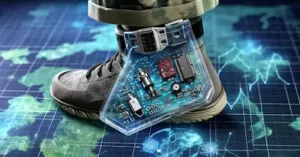Ankle monitors, widely known for tracking the movement of individuals on parole or house arrest, raise intriguing questions about privacy and surveillance. One question that’s often asked but rarely explored in depth is: how long does the data from an ankle monitor stay in the system?
While some might believe the information is wiped off immediately after its purpose is served, the truth is a tad more complicated. Let’s peel back the layers on the lifespan of ankle monitor data.

How Long Does Ankle Monitor Stay in the System?
The typical duration of ankle monitor usage varies depending on the specific terms of an individual’s sentence. In some cases, ankle monitors may be required for a few months, while in others, they could be part of a sentence for several years. Factors such as the nature of the offense, the individual’s compliance with restrictions, and the discretion of the court or parole board can all influence the duration of ankle monitor usage. Legal regulations and policies governing ankle monitor usage duration also vary by jurisdiction, adding another layer of complexity to this issue.
What Determines the Duration of Ankle Monitor Use?
The duration of ankle monitor use is determined by several key factors:
Judicial Decisions
The court’s judgment, based on the specifics of the case, primarily determines the length of time an ankle monitor must be worn. This decision is influenced by the nature of the offense, the individual’s criminal history, and the conditions of their bail or parole.
Type of Offense
The severity of the crime plays a significant role. Minor offenses may result in shorter monitoring periods, while more serious crimes could lead to longer monitoring.
Compliance with Terms
The individual’s adherence to the terms set by the court or monitoring agency affects the duration. Non-compliance or violations can extend the monitoring period, while strict adherence might lead to a reduction.
Risk Assessment
The perceived risk an individual poses to the community can influence the monitoring period. Higher risk cases often result in longer monitoring to ensure public safety.
Legal Reviews and Adjustments
Periodic reviews of the individual’s case and behavior can lead to adjustments in the monitoring period. Positive behavior and compliance with legal requirements can shorten the period.
Availability of Rehabilitation Programs
Participation in and completion of rehabilitation or counseling programs can also influence the duration, as these are seen as positive steps towards reintegration into society.
The duration of ankle monitor use is a complex decision influenced by legal, behavioral, and rehabilitative factors, aimed at balancing the individual’s rehabilitation needs with public safety concerns.
What Are the Common Reasons for Extended Ankle Monitoring?
Extended ankle monitoring can be a result of various factors, often related to the individual’s behavior, legal requirements, or specific circumstances of their case. Here are some common reasons for prolonging the use of an ankle monitor:
Violation of Monitoring Terms
If an individual breaches the specific conditions set by the court, such as entering restricted areas, breaking curfew, or tampering with the device, it can lead to an extension of the monitoring period.
Repeated Offenses
Committing additional offenses while under monitoring can result in extended monitoring time, reflecting increased concern for public safety and the need for closer supervision.
Non-compliance with Court Orders
Failing to comply with other court orders, such as attending mandatory counseling sessions, rehabilitation programs, or court appearances, can lead to extended monitoring.
Risk to Public Safety
If an individual is assessed as posing a higher risk to the community, perhaps due to the nature of their offense or past behavior, the monitoring period might be extended to ensure public safety.
Technical Issues with the Monitor
Occasionally, technical problems with the monitoring device, such as signal loss or malfunction, can lead to an extension while the issues are resolved to ensure continuous and effective monitoring.
Delay in Legal Proceedings
Delays in court proceedings, whether due to backlog, new evidence, or legal complexities, can also extend the time an individual is required to wear an ankle monitor.
Lack of Alternative Supervision
In some cases, if there are no other viable means of supervision or monitoring available, the duration of ankle monitoring might be extended as a precautionary measure.
Extended ankle monitoring is typically a response to specific behaviors, risks, or legal circumstances, reflecting the need for continued supervision to ensure compliance with legal requirements and public safety.
Removal of ankle monitors from the system
The process of removing an ankle monitor from the system involves coordination between the individual under monitoring, their legal representatives, and the supervising authorities. Criteria for removal may include the completion of the designated monitoring period, adherence to the terms of supervision, and approval from the relevant authorities. Improper removal or tampering with ankle monitors can lead to severe consequences, including legal repercussions and extended monitoring periods.